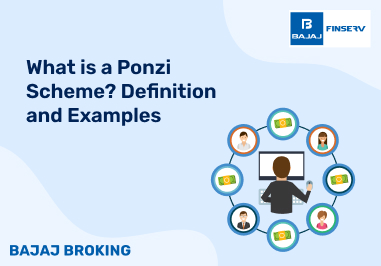The derivatives market is a crucial segment of the financial system where contracts derive their value from underlying assets like stocks, commodities, or currencies. Investors use it for speculation, risk management, and portfolio diversification. It consists of exchange-traded and over-the-counter (OTC) derivatives, offering opportunities for hedging and leverage. Understanding the derivative market is essential for navigating financial markets effectively and managing risks.
Classification of Derivatives
Derivatives fall into two broad categories based on where and how they are traded:
Exchange-Traded Derivatives
Exchange-Traded Derivatives are contracts traded on organised exchanges, ensuring transparency and regulatory oversight. Examples include futures and options, which follow predefined terms.
Over-the-Counter (OTC) Derivatives
OTC derivatives are privately negotiated between two parties, offering flexibility but with higher counterparty risks. Swaps and forwards are common OTC instruments.
Key Features of the Derivatives Market
The following are some unique features of the derivatives market :
Hedging
Hedging can be understood using a simple example. Think of yourself as a farmer worried about a potential drop in grain prices before harvest. You can use the derivatives market to lock in a selling price today, ensuring a predictable income regardless of market fluctuations.
Leverage
Derivatives allow you to control a much larger position in an asset with a smaller initial investment compared to buying the asset outright. It is like using a financial lever to magnify your exposure. This leverage can be a double-edged sword, as it can amplify both your profits and losses in the derivatives market.
Price Discovery
A feature and an advantage of the derivatives market is that it can be very useful in predicting the future prices of a variety of assets. The collective bets of traders on the future price of an underlying asset influence its actual price. This continuous price discovery is an inherent feature of the derivatives market and helps create a more efficient market.
Speculation
Traders can plan their moves in the derivatives market by taking calculated risks based on their predictions of future price movements. If you believe a stock price will surge, you can enter into a contract to profit from that increase. However, you will incur losses if your predictions are wrong.
Functions of Derivatives Market
Market-Based Price Evaluation
The derivatives market helps establish asset prices based on market expectations and trends. Traders' collective actions influence price movements, ensuring fair value assessment.
Hedging Against Risk
Investors use derivatives to shield themselves from unfavourable price fluctuations. For instance, businesses and traders can lock in prices, reducing uncertainty in volatile markets.
Investment Flexibility
Derivatives allow investors to gain exposure to diverse asset classes without directly owning them, making it easier to manage financial portfolios.
Capital Optimization
Trading in the derivative market requires lower capital compared to direct investments. This makes it accessible to institutional and retail investors seeking efficient fund allocation.
Enhanced Market Liquidity
By enabling quick entry and exit positions, derivatives contribute to increased liquidity in financial markets, reducing transaction costs.
Risk Distribution
The derivatives market helps distribute financial risk across different participants, ensuring better stability in economic ecosystems. It allows businesses and investors to transfer risks effectively.
Importance of Derivatives Market
Risk Management
The derivatives market enables investors to hedge against price fluctuations, reducing uncertainty in volatile markets. Businesses use it to lock in costs and protect revenues.
Market Liquidity
By allowing quick entry and exit, derivatives enhance market liquidity, making transactions more efficient and cost-effective.
Price Determination
Futures and options reflect investor expectations, helping in transparent and fair price discovery of assets.
Capital Efficiency
The derivative market allows significant market exposure with minimal capital, optimizing resource allocation.
Diversification Opportunities
Investors can use derivatives to diversify across asset classes, reducing overall investment risk.
Economic Stability
The market facilitates better risk distribution, supporting financial system stability and growth.
Types of Derivatives Market
The derivatives market offers numerous types of derivatives catering to different needs. The following are some common ones:
Futures and Options Contracts
Futures agreements obligate you to buy or sell an asset at a predetermined price on a specific future date. Conversely, options contracts give you the right, but not the obligation, to buy or sell an asset at a certain price by a specific date.
Forwards
Forwards are quite similar to futures contracts. However, they are customized and traded directly between two parties without going through an exchange. Therefore, they are not formally regulated but still legally binding.
Swaps
Swaps are agreements to exchange cash flows based on different underlying assets or indexes.
Additional Read: Swaps in Derivatives
Participants in the Derivatives Market
The derivatives market has a plethora of participants playing crucial roles:
Hedgers
These include businesses and investors seeking to protect themselves from price fluctuations in the underlying asset.
Speculators
These are traders who take calculated risks based on their predictions of future price movements in the derivatives market.
Arbitrageurs
These market mavericks exploit price discrepancies between different markets to earn profits.
Market Makers
They provide liquidity by ensuring there are always buyers and sellers for specific contracts in the derivatives market.
Roles of the Derivatives Market
The derivatives market plays a crucial role in modern financial ecosystems, providing a structured framework for managing risk, facilitating price discovery, and ensuring capital efficiency. By allowing investors, businesses, and institutions to hedge against uncertainties and speculate on price movements, derivatives contribute to economic stability and efficient market operations.
Key Roles of the Derivatives Market:
Risk Management
Market participants use derivatives to hedge against price volatility in commodities, equities, currencies, and interest rates. This allows them to protect their portfolios and business operations from unexpected fluctuations.
Price Discovery
Derivatives contracts reflect the collective market sentiment about future price movements, helping businesses, policymakers, and investors make informed financial decisions.
Liquidity Enhancement
By providing alternative trading opportunities, the derivatives market increases liquidity and enables investors to enter and exit positions efficiently.
Market Efficiency
Arbitrageurs in the derivatives market help correct price imbalances between assets and exchanges, ensuring that asset prices remain fair and aligned across different markets.
Portfolio Diversification
Investors use derivatives to create diversified strategies, balancing risk exposure across asset classes.
Examples of Derivatives Market
The derivatives market includes a wide range of instruments that serve various purposes, from hedging to speculation. These financial tools allow businesses and investors to manage price risks effectively while optimizing capital allocation. Below are some practical examples of how derivatives function in real-world scenarios.
Examples of Derivatives in Action:
Hedging with Futures Contracts
A wheat farmer concerned about price drops can enter into a futures contract to sell wheat at a predetermined price, ensuring stability regardless of future market fluctuations.
Options for Risk Management
A stock investor can purchase a put option to protect their portfolio from a market downturn while maintaining potential upside gains.
Interest Rate Swaps
Companies with variable-rate loans can use interest rate swaps to lock in fixed interest rates, protecting themselves from rising borrowing costs.
Currency Hedging
A multinational corporation dealing with international transactions can use currency futures to hedge against exchange rate fluctuations and stabilize financial planning.
Significance of the Derivatives Market
Here’s why the derivatives market is significant:
Risk Management and Hedging
The derivatives market allows you to manage risk effectively by hedging against price fluctuations in stocks, commodities, and currencies. This reduces uncertainty and protects your investments from unexpected market changes.
Liquidity Enhancement
Derivatives increase market liquidity by enabling large trades without significantly impacting asset prices. This ensures smoother transactions for both institutional and retail investors, reducing overall trading costs.
Efficient Price Discovery
Derivatives provide a platform for accurate price discovery, reflecting real-time market expectations and economic trends. This helps traders and businesses make more informed financial decisions.
Regulatory Oversight and Transparency
Exchange-traded derivatives are regulated to prevent systemic risks, ensuring transparency and minimizing counterparty risk. Over-the-counter derivatives offer flexibility but require more careful monitoring.
Capital Optimization
Derivatives allow you to control larger asset positions with relatively smaller capital, making them a potential tool for resource allocation. However, the outcome depends on market movements and strategy execution, making it essential to approach both speculative and strategic investments cautiously.
Advantages of Derivatives Market
Risk Management
Hedging with derivatives can safeguard your portfolio from unexpected price movements, thereby serving as a unique advantage of the derivatives market.
Market Access
The derivatives market offers exposure to a wider range of assets, including commodities, currencies, and interest rates, which might not be readily accessible through traditional stock purchases.
Short Selling
Unlike the cash market, the derivatives market allows you to profit from a decline in the price of an underlying asset through short selling strategies.
Additional Read: Credit Spread Strategy
Disadvantages of Derivatives Market
Complexity
The multitude of features of derivatives markets make them complex instruments to use in an actual market setting, and a thorough understanding is essential before venturing into this market.
High Risk
The leverage offered by derivatives can magnify losses significantly. Therefore, it is crucial to have a robust risk management strategy in place before entering the derivatives market.
Market Volatility
Derivatives markets are susceptible to sudden price swings, which can lead to substantial losses if you are not careful.
Risks Associated with the Derivatives Market
While derivatives can be a powerful tool, they come with some inherent risks:
Leverage Risk
As mentioned earlier, leverage can magnify both profits and losses. A small price movement against your position can lead to significant losses.
Margin Risk
If the market moves against your position, and your account falls below the minimum margin requirement, a broker may issue a margin call, forcing you to deposit additional funds to maintain your position in the derivatives market.
Counterparty Risk
There is always a risk that the other party to your derivatives contract may default on their obligations.
Regulatory Framework and Compliance
The derivatives market is a well-regulated space, with the Securities and Exchange Board of India (SEBI) overseeing its operations. Here are some key aspects of this framework:
Exchange Listing
Most derivative contracts are traded on recognized stock exchanges like the National Stock Exchange (NSE) and Bombay Stock Exchange (BSE).
Margin Requirements
SEBI sets minimum margin requirements for different derivative contracts to mitigate risks while trading in the derivatives market.
Investor Protection Measures
SEBI regulations aim to protect investors by ensuring transparency and fair practices in the derivatives market.
Conclusion
The derivatives market, including futures and options offer a unique set of opportunities for Indian traders. Only by understanding the key features, different types of contracts, and the advantages and disadvantages, you can make informed decisions about whether derivatives are a suitable addition to your investment strategy and portfolio.















